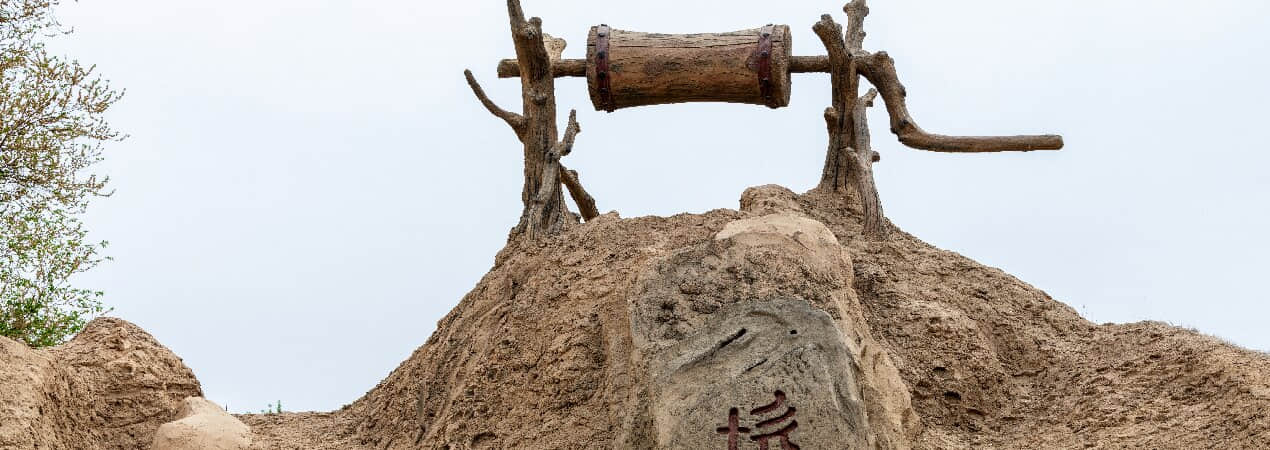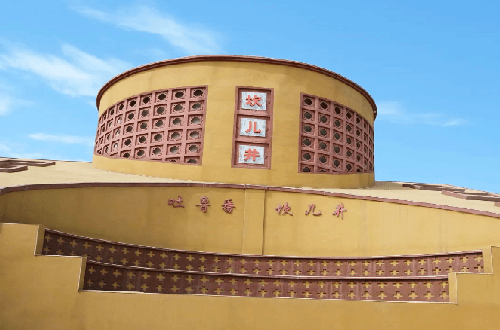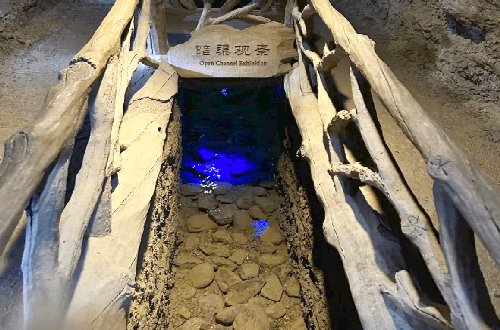Karez Folk Custom Garden

The Karez Folk Custom Garden is a scenic area where you can systematically learn about the Karez culture in Xinjiang. You can also dine and stay here, savor Uyghur-style architecture and cuisine, making it an excellent destination for tourism in Turpan.
- Chinese name: 坎儿井民俗园 Kǎn ér jǐng Mín Sú Yuán
- Suggested time: 2 - 3 hours
- Ticket: 40 yuan per person
- Open hours: Winter: 09:30 - 19:30
- The best time to visit: From May to October
- Address: Xinmen Village, Xincheng Road, Gaochang District, Turpan City, Xinjiang Uygur Autonomous Region, China
- How to get there: Take bus No. 101 and get off at Karez Folk Custom Garden Station
- Surroundings: Turpan Museum, Grape Valley, and Flaming Mountain
Highlights of Karez Folk Custom Garden
Karez Museum
 Karez Museum
Karez MuseumThe Karez Museum, which you can see as soon as you enter the scenic area, is also a good place to systematically understand Karez culture. The museum uses various exhibits, pictures, text descriptions and modern multimedia display methods to vividly and intuitively display the working principles, excavation process, historical development, and important role of the Karez in Turpan, so that you can systematically understand Karez culture and feel the wisdom of the ancient Uyghur people.
Karez Prototype
 Karez Prototype
Karez PrototypeTo the north of the museum lies another main attraction in the scenic area – the Karez prototype, stretching about 300 meters and consisting of an underground channel (anqu) and a surface channel (mingqu, where the underground water emerges to the surface). Visitors are allowed to enter the underground Karez passage to observe the working principles of Karez on site.
 Underground Channel
Underground ChannelThe underground channel, also known as anqu, serves as the main body of Karez. Its function is to collect water from the underground aquifer. Typically dug at a certain slope from lower to higher ground, the channel enables water to flow out to the surface automatically. The underground channel is generally 1.7 meters high and 1.2 meters wide, ranging from 100 to 200 meters in short sections and extending up to 25 kilometers in the longest ones. Since the entire channel is excavated underground, the excavation project is extremely arduous. When digging the underground channel, the ancient people of Turpan invented the wooden stick orientation method and the oil lamp orientation method to determine the direction, ensuring the smooth excavation of the channel.
Raisin Drying House
It is a traditional venue in Xinjiang for drying raisins. You can learn about the raisin-drying process here and observe how the unique structure of the drying house utilizes natural ventilation and dry conditions to produce delicious raisins.
Folk Customs Street
There are various buildings and shops with ethnic characteristics on both sides of the street. You can buy handicrafts and souvenirs with Xinjiang characteristics here, and also appreciate the traditional architectural styles of ethnic minorities such as the Uyghurs.
Educational Value
In Turpan Karez Folk Custom Garden, visitors can directly contact the core structures of Karez, such as vertical wells, underground channels, and open channels. Through on-site observation and professional explanations, people can deeply understand how Karez cleverly uses the terrain slope to introduce the meltwater of mountain ice and snow into the underground underground channel to avoid evaporation and leakage, and then transport the water to farmland and villages through the open channel. This unique underground water conservancy system shows the ancient working people's profound understanding of fluid mechanics and engineering, and provides visitors with a vivid example of learning the principles of ancient water conservancy engineering. At the same time, the excavation technology and measurement methods of Karez, such as using the light and dark of oil lamps in the vertical well to judge the slope direction of the underground channel, also fully reflect the wisdom of the ancients and are important physical materials for studying ancient engineering technology.
Activities to do at Karez Folk Custom Garden
Experience the engineering structure of Karez: You can enter the underground Karez channel, watch the working principle of Karez on site, experience the magic of this ancient water conservancy project, and understand how it draws underground river water in the arid Turpan Basin to turn the desert into an oasis.
Drop us a line and we'll connect you with the top China expert in no time!